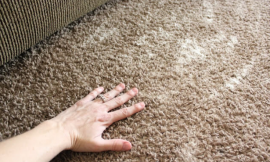
Did you know that nearly 50% of homes have mold in at least one area? That’s a startling statistic! Mold can wreak havoc on both your home and your health, particularly in damp spaces like basements. As a homeowner, understanding the best practices for preventing mold in your basement is essential. In this guide, we’ll explore proven techniques and proactive measures that ensure your basement remains dry, clean, and safe. Whether you’re new to home maintenance or looking for fresh tips, you're in the right place!
Understanding Mold: Causes and Effects
When we talk about mold, we’re referring to a type of fungus that thrives in moist environments. In basements, it can show up in several forms, such as black mold, white mold, or even greenish mold. Each type has its unique characteristics and could pose different risks to your health and your home.
You might be wondering, what actually causes mold to grow in those basement corners? Well, common culprits include high humidity levels, water leaks, and poor ventilation. These factors create a perfect storm for mold proliferation.
Speaking of health, mold exposure is not something to take lightly. It can lead to various health issues, including respiratory problems, allergies, and irritations. In some cases, prolonged exposure can exacerbate existing health conditions, making it crucial to address any mold problems promptly.
Neglecting mold can lead to severe consequences. Beyond the potential health risks, mold can also damage your property, leading to costly repairs and even a decrease in your home’s value.
Assessing Your Basement for Moisture
So, how do you identify moisture sources in your basement? Start by examining the walls and floors for any dampness or water stains. It’s also wise to check for visible leaks from pipes or emerging water from the ground.
To get a clearer picture of your basement’s humidity levels, you might want to invest in a hygrometer. This handy tool records humidity levels and can help you determine if you’re in the danger zone for mold growth, which is typically above 60%.
Keep your eyes peeled for common signs of existing mold or moisture issues. These include a musty smell, peeling paint, and visible mold patches, all of which signal that it’s time to take action.
Regular assessments are crucial as well. Establish a routine to inspect your basement for moisture and mold, ideally every few months. With this proactive approach, you can catch potential problems early on.
Keeping Your Basement Dry
One of the best defenses against mold is a proper drainage system around your home. Ensure that your gutters and downspouts direct water away from your foundation. This simple measure can significantly reduce moisture levels in your basement.
Sealing your basement walls and floors is another effective technique. Use waterproof sealants and paints that create a barrier against moisture. This is especially critical in older homes where cracks and gaps may be present.
Have you considered using a dehumidifier? These devices can help maintain a balanced humidity level, making it less favorable for mold growth. Placing a dehumidifier in your basement can go a long way in moisture control.
Don’t forget about air circulation! Proper venting promotes airflow, which helps keep the space dry. Consider installing vents or using fans to improve circulation and minimize damp conditions.
Maintaining Proper Temperature and Ventilation
Temperature plays a significant role in mold prevention. Keeping your basement in an optimal range of 68°F to 72°F can help hinder mold growth. If it gets too warm and humid down there, mold can flourish.
Ventilation is just as crucial. Ensure that your basement is well-ventilated by installing vents or windows that can open. This allows fresh air to enter and reduces stale, humid air.
Using fans and exhaust systems effectively can also help manage moisture levels. Strategically placing fans can enhance air movement and reduce humidity, making it harder for mold to find a comfortable home.
Seasonal considerations play an important role in basement maintenance as well. Pay extra attention during the fall and spring months when humidity can fluctuate and lead to mold growth.
Regular Cleaning and Maintenance Practices
Incorporating regular cleaning habits can do wonders for reducing mold spores. Frequent dusting and vacuuming will help eliminate potential mold food sources, such as dust and organic matter.
When it comes to cleaning products, opt for safe mold control solutions. Look for products that are specifically designed to kill mold without harsh chemicals. These will keep your basement clean while ensuring a healthier environment.
Regular inspections and upkeep are vital for mold prevention. Create a checklist for your basement that includes a visual inspection and a cleaning regimen. It's a small commitment that can yield significant rewards.
Consider creating a maintenance schedule to keep your basement in tip-top shape. With scheduled cleaning and assessments, you can fend off mold before it becomes a problem.
Using Mold-Resistant Materials
When renovating your basement, using mold-resistant paints and drywall can significantly deter future mold growth. These materials are specially formulated to resist moisture, making them an excellent choice for basement projects.
If you’re considering renovations, look into recommended materials that are less likely to harbor mold. This includes flooring options like vinyl or treated wood that perform better in damp environments.
Guidelines for selecting mold-proof furnishings are also essential. Look for furniture made of non-porous materials that won’t absorb moisture. This simple decision can further minimize mold risks.
While mold-resistant materials may come with a higher upfront cost, the long-term savings in preventing mold-related damage can be well worth the investment. By being proactive with your material choices, you can safeguard your home for years to come.
Conclusion
Preventing mold in your basement isn’t just a one-time task — it’s an ongoing commitment to maintaining a healthy home. By following these best practices, you can significantly reduce the risk of mold growth and protect your space. Whether you're tackling moisture issues or regularly assessing your basement, each step you take contributes to a safer and more enjoyable living environment. Don’t wait until mold shows up; start implementing these strategies today!





